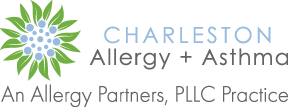Has a good workout ever left you in a bad way? No, we’re not just talking about that day-after-lifting muscle soreness or post-run tiredness. For up to 20% of the general population, shortness of breath and similar asthmatic symptoms are an unfortunately common part of their exercise routine. This effect is known as exercise-induced bronchoconstriction.
What is EIB?
Exercise-induced bronchoconstriction (EIB) is the constriction of the airways due to intense exercise. Formerly called exercise-induced asthma, EIB is the preferred medical term, as exercise cannot cause asthma but only exacerbate its symptoms.
While 90% of asthma patients experience EIB, people can experience this phenomenon without having asthma. Diagnosis of this condition has nothing to do with one’s physical fitness. In fact, studies show it is common to find EIB in even the most elite, Olympic-level athletes.
Causes, Symptoms and Treatments
The most accepted cause of EIB is the inhalation of dry, cold air during exercise. Strenuous physical activity often requires us to switch up our breathing. As we shift to quicker, shallower breaths, we rob our lungs of the warmer, humidifying effects of deep breathing.
When paired with the constricting effects of cold, dry air, it becomes increasingly difficult to breathe. Other potential triggers of EIB include air pollution, chlorine and fumes (paint, perfume, etc.).
You may be living with EIB if you experience these common symptoms during or after exercise:
- Coughing and/or wheezing
- Shortness of breath
- Fatigue
- Chest pain or tightness
People experiencing EIB can typically resume regular physical activity once symptoms are appropriately treated. Common treatments include long-term asthma control medications and corticosteroid inhalers. Non-medicine-based preventative measures such as gentle warm-ups, nose breathing and cold-air avoidance can also help reduce the risk of flare-ups.
Due to EIB’s similarity to asthma and other respiratory conditions, it is critical to consult your doctor for help identifying symptoms and causes and outlining a treatment plan.
Breathe easier with help from our team!
Don’t let breathing difficulty hold you back any longer. Charleston Allergy and Asthma’s board-certified allergy specialists are here to help Lowcountry patients live allergy-free. Contact us today to schedule an appointment and explore our site to learn more about our services.




